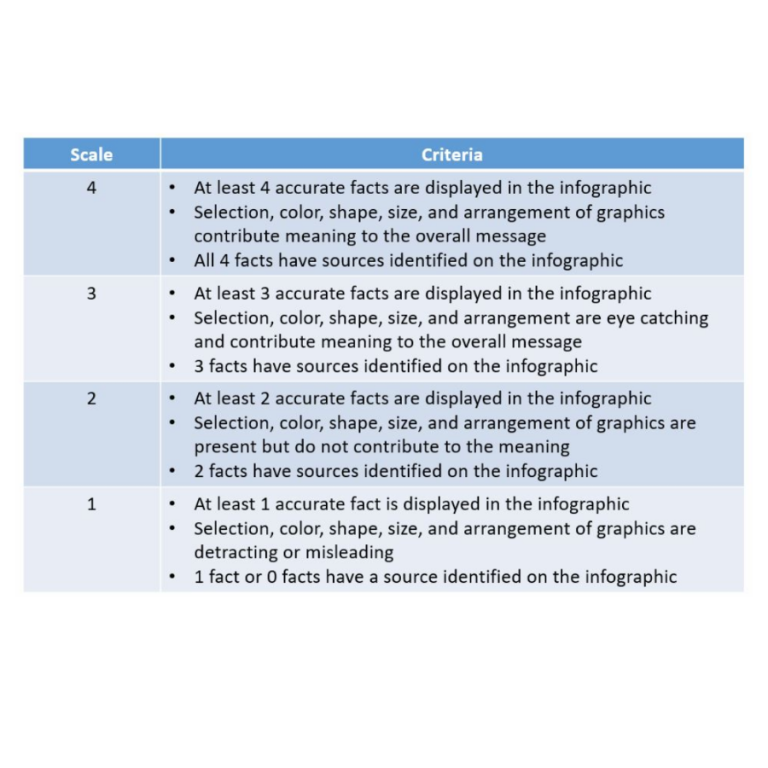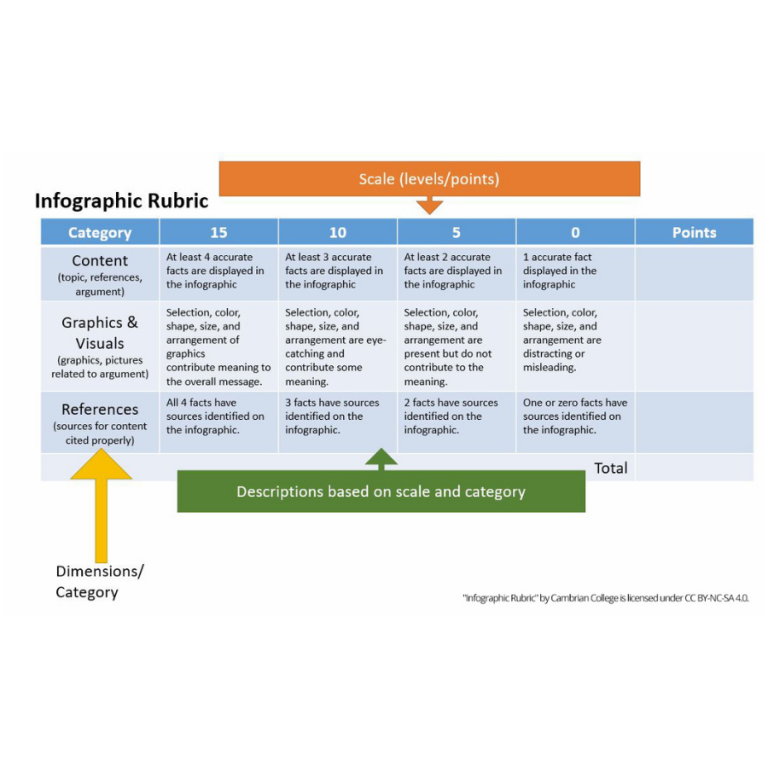
A rubric is a scoring guide that uses a clear measurement scale and explanatory descriptions to communicate how students’ work will be evaluated. Rubrics are often used for assignments that involve open-ended questions and require student-constructed or student-performed work. Some of the most common assignments that utilize rubrics are discussion posts, research papers, presentations, group work, journals, creative assignments, and portfolios.
Why We Use Rubrics
Wiggins and McTighe (2005) suggest that rubrics answer three questions:
- By what criteria should performance be judged?
- What should we use to determine levels of success?
- How should quality, proficiency, or understanding be described?
By using rubrics, we are able to:
- Be consistent in our grading practices.
- Offer clear expectations about assignments and evaluations.
- Identify how various components contribute to the overall goals of the assignment.
- Save time while offering more beneficial feedback.
Types of Rubrics
Two of the main types of rubrics are holistic and analytic.
Holistic
Holistic rubrics use a single scale, such as 1-3, and typically use terms like Excellent, Satisfactory, or Developing, followed by a description, to capture a score for the overall performance or submission. These types of rubrics may be easier to create and are good to use when general, or overall, assessment is appropriate. The disadvantage of holistic rubrics is that they do not allow for feedback on specific criteria and may make it difficult for students to know what was lacking in their work. For an example of a holistic rubric, consider Cambrian College’s rubric for grading an infographic assignment.
Analytic Rubrics
Analytic rubrics are multi-dimensional and present the characteristics of each part of the assignment that will be evaluated. Analytic rubrics are organized as grids or matrices that present criteria and levels. The analytic rubric allows for more specificity, offers students more feedback on the various parts of their work, and can provide faculty with more objective ways to evaluate multiple elements of student work. Although these rubrics take longer to create, they provide greater learning opportunities for students because they can see both strengths and areas for improvement. For an example, Cambrian College provides an analytic rubric for the infographic assignment as well.
Creating and Using Rubrics in D2L
https://faculty.saintleo.edu/teaching/d2l_teaching_resources/rubrics
Resources
Wiggins, G. & McTighe, J. (2005). Understanding by Design (2nd ed.). Pearson.




